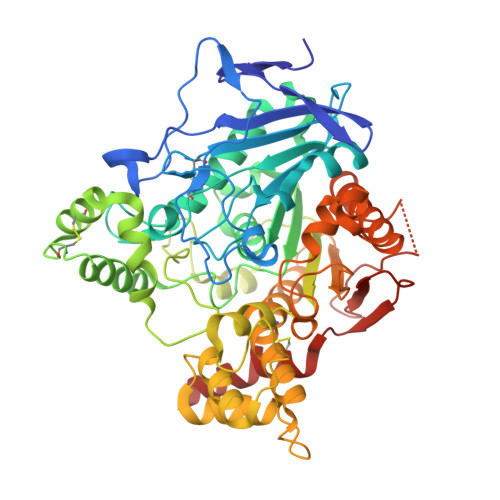Three-dimensional structure of a complex of galanthamine (Nivalin) with acetylcholinesterase from Torpedo californica: implications for the design of new anti-Alzheimer drugs
Bartolucci, C., Perola, E., Pilger, C., Fels, G., Lamba, D.(2001) Proteins 42: 182-191
- PubMed: 11119642
- DOI: https://doi.org/10.1002/1097-0134(20010201)42:2<182::aid-prot50>3.0.co;2-1
- Primary Citation of Related Structures:
1QTI - PubMed Abstract:
The 3D structure of a complex of the anti-Alzheimer drug galanthamine with Torpedo californica acetylcholinesterase is reported. Galanthamine, a tertiary alkaloid extracted from several species of Amarylidacae, is so far the only drug that shows a dual activity, being both an acetylcholinesterase inhibitor and an allosteric potentiator of the nicotinic response induced by acetylcholine and competitive agonists. The X-ray structure, at 2.5A resolution, shows an unexpected orientation of the ligand within the active site, as well as unusual protein-ligand interactions. The inhibitor binds at the base of the active site gorge, interacting with both the acyl-binding pocket and the principal quaternary ammonium-binding site. However, the tertiary amine group of galanthamine does not directly interact with Trp84. A docking study using the program AUTODOCK correctly predicts the orientation of galanthamine in the active site. The docked lowest-energy structure has a root mean square deviation of 0.5A with respect to the corresponding crystal structure of the complex. The observed binding mode explains the affinities of a series of structural analogs of galanthamine and provides a rational basis for structure-based drug design of synthetic derivatives with improved pharmacological properties. Proteins 2001;42:182-191.
Organizational Affiliation:
Istituto di Strutturistica Chimica G. Giacomello, Monterotondo Stazione, Roma, Italy.















